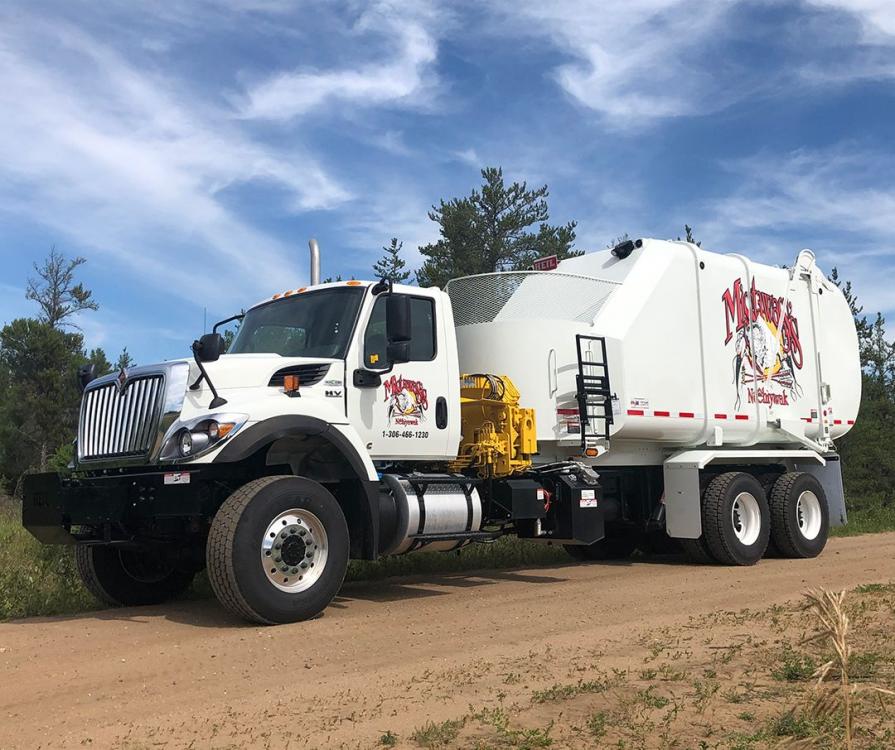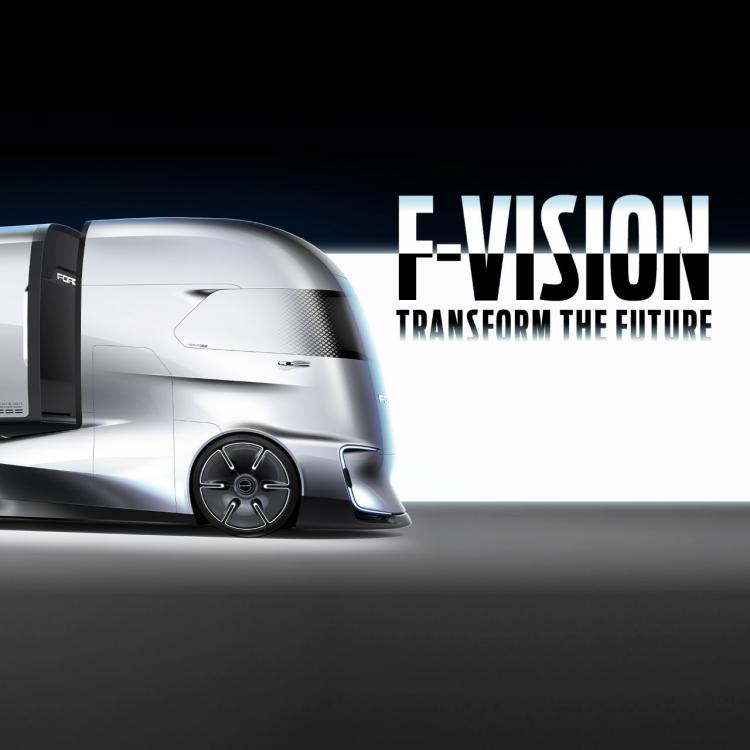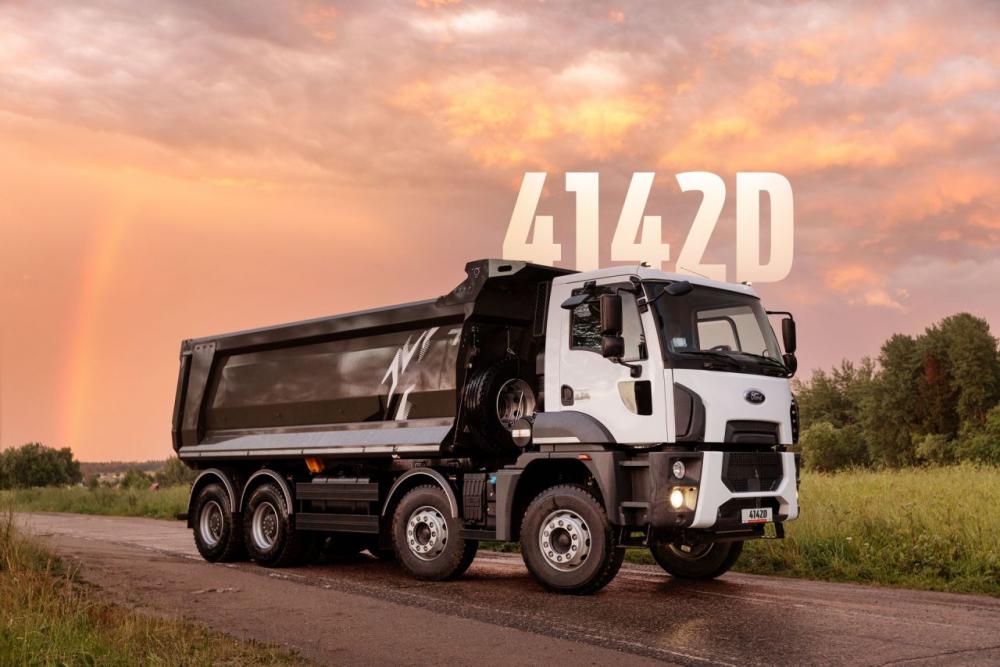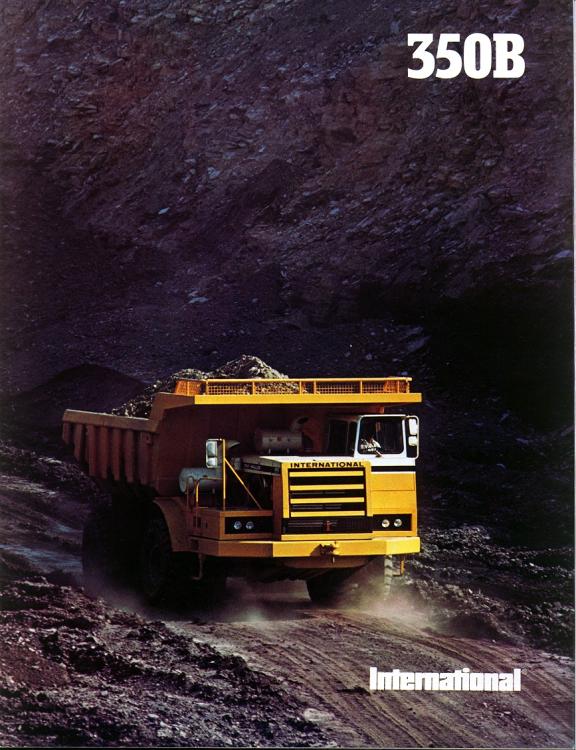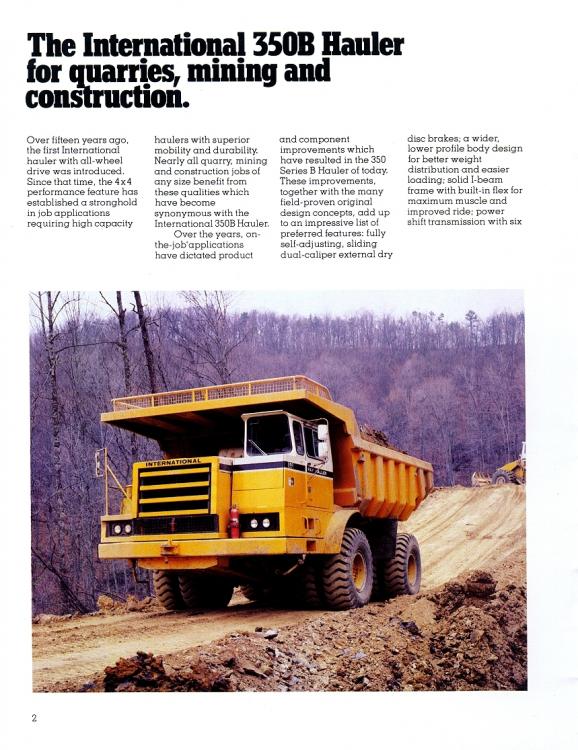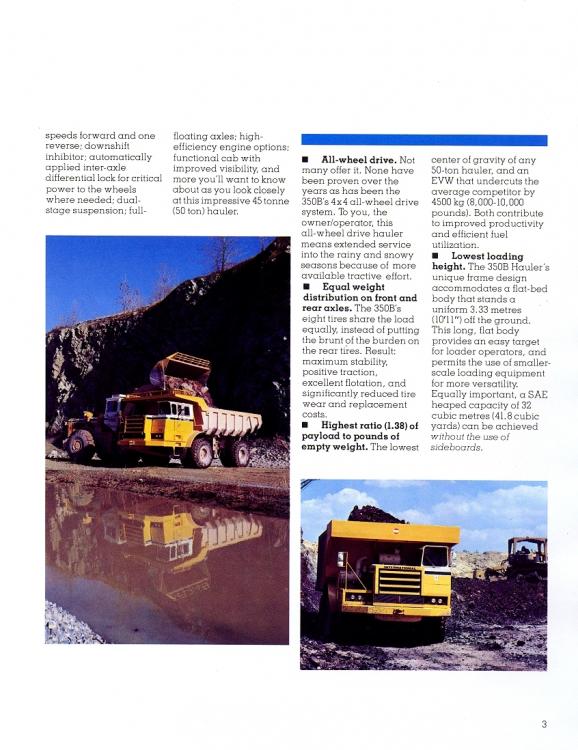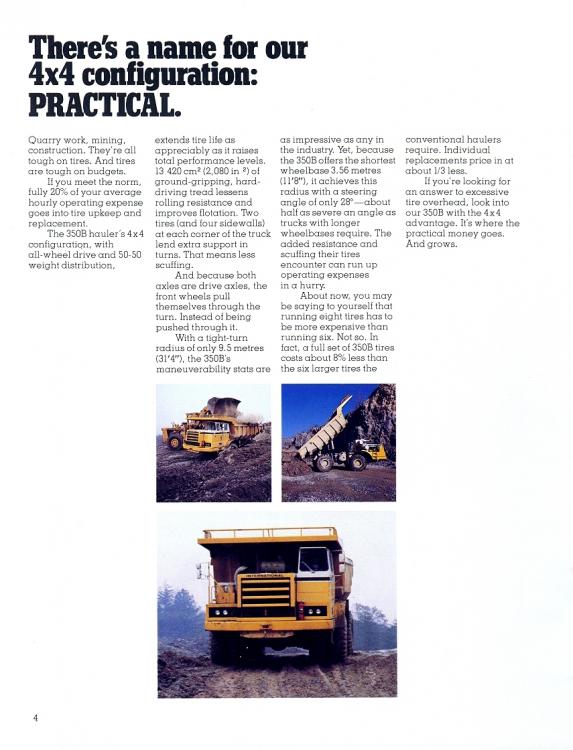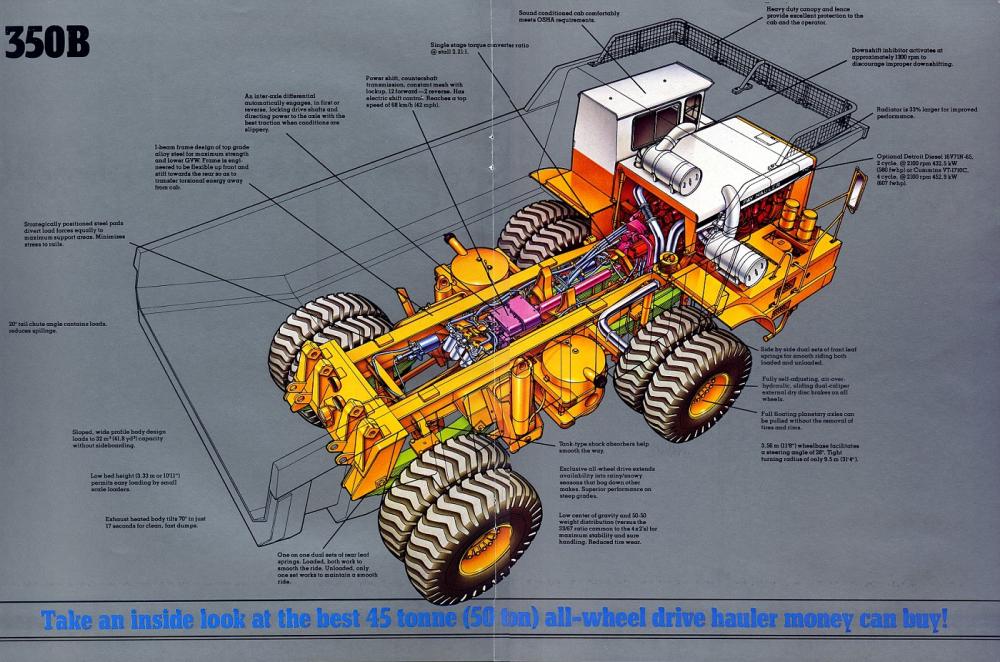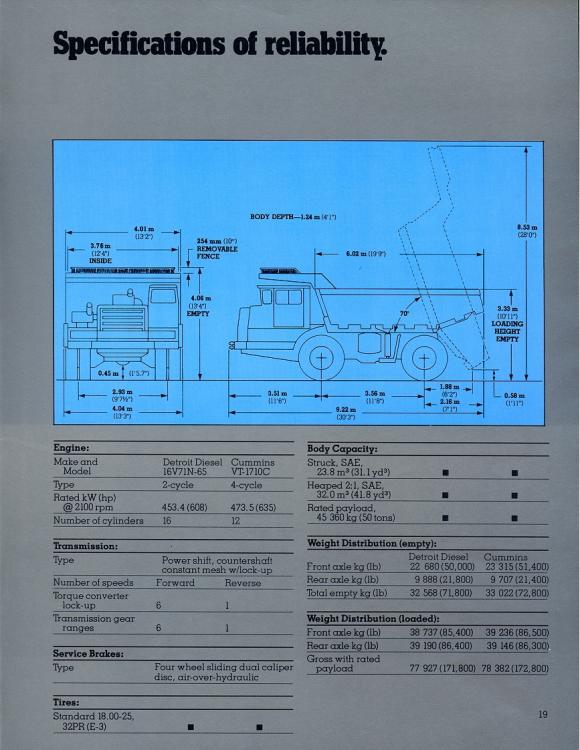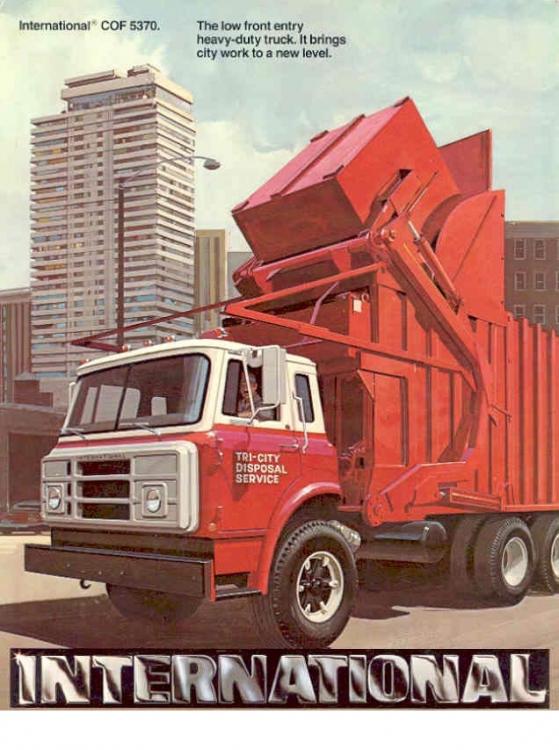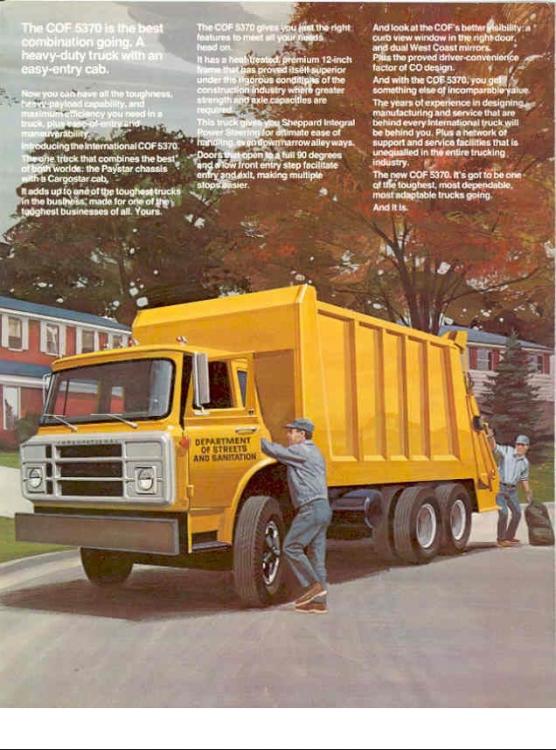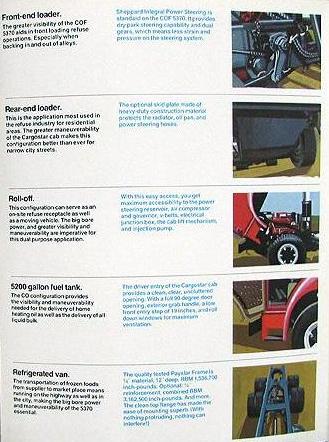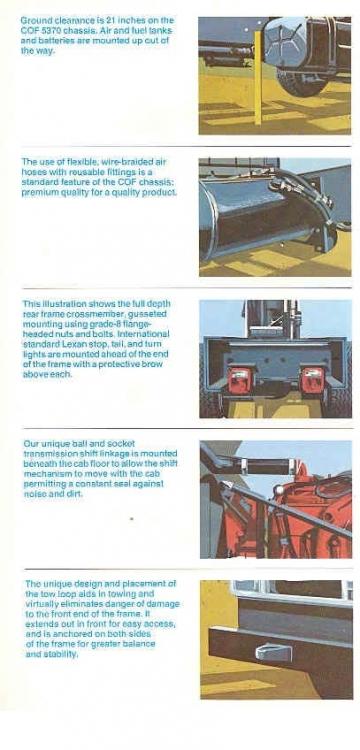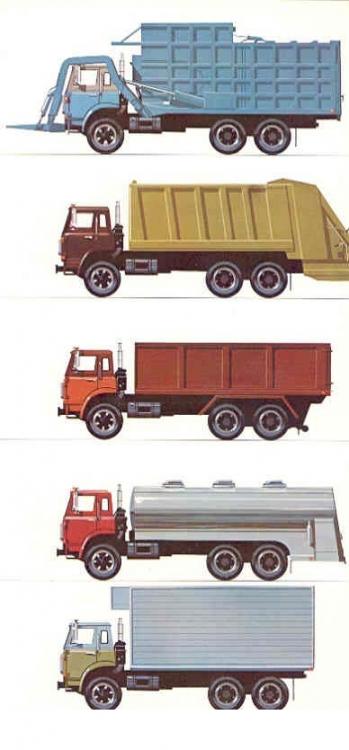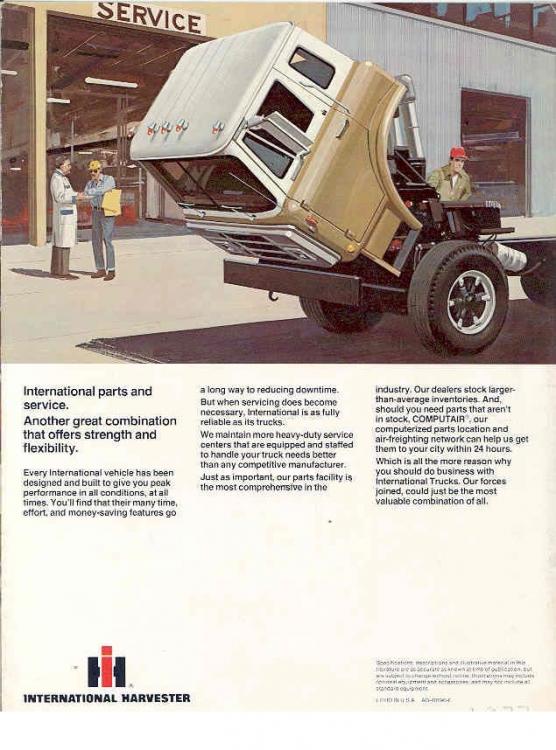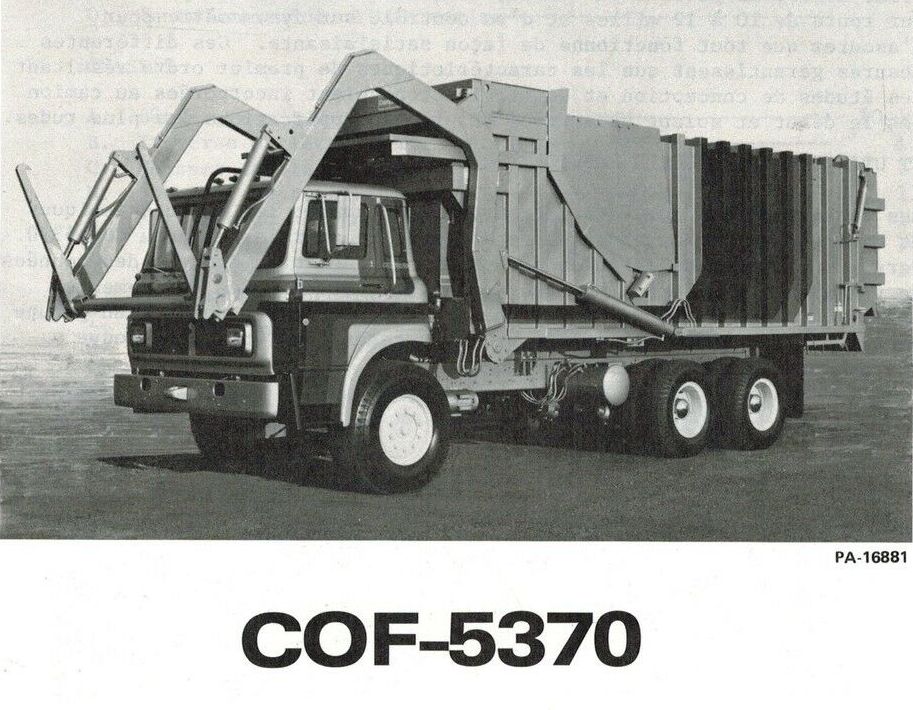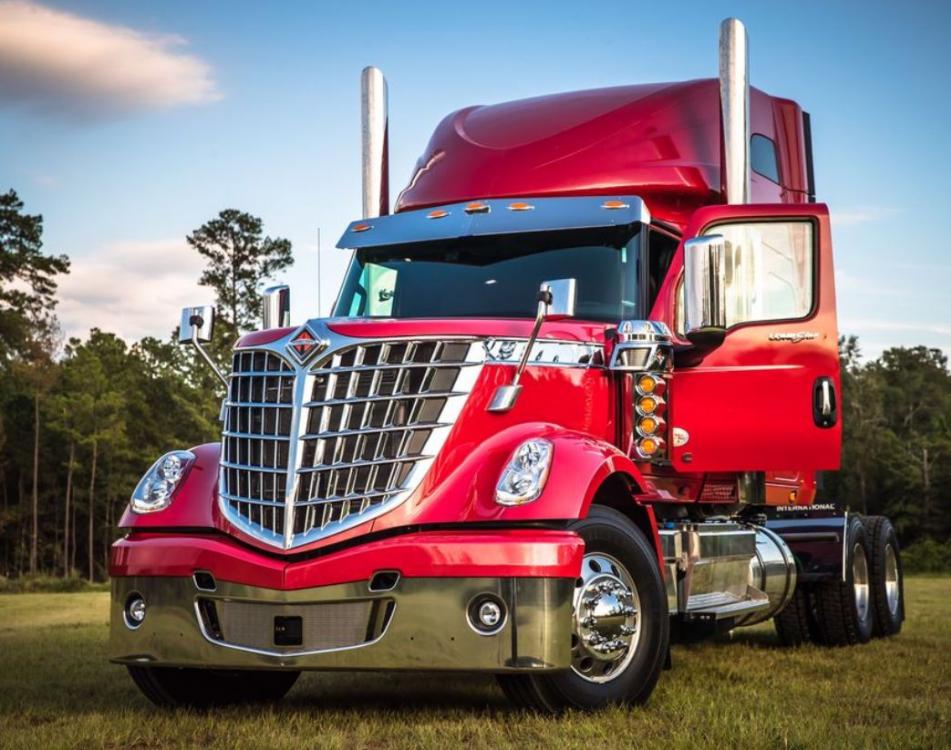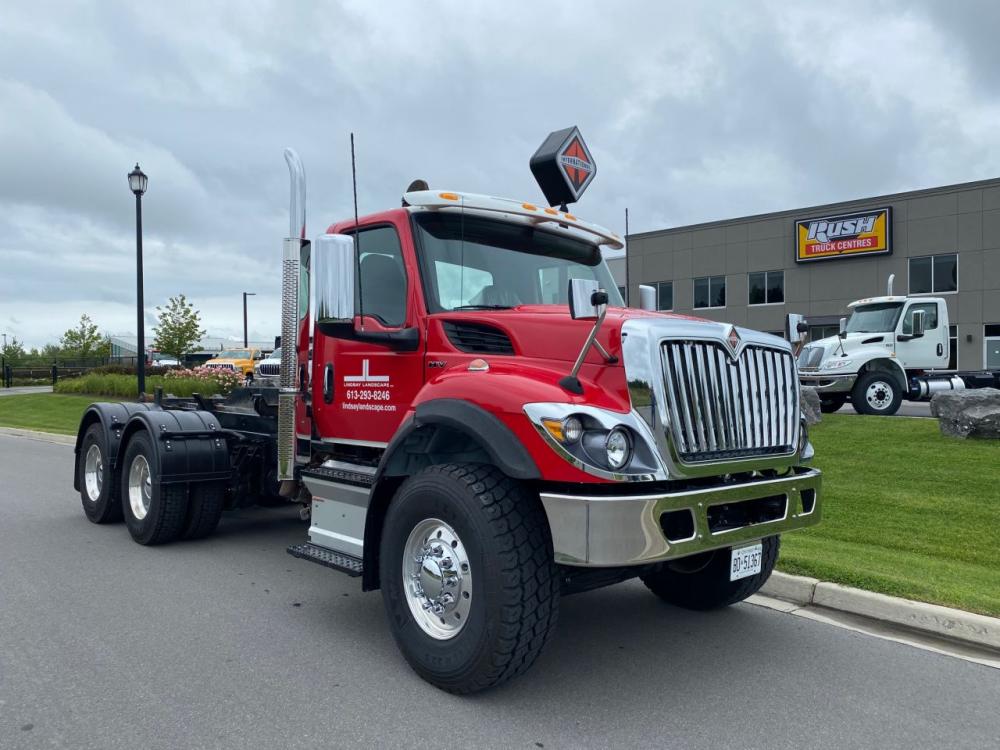
kscarbel2
Moderator-
Posts
18,868 -
Joined
-
Days Won
114
Content Type
Profiles
Forums
Gallery
Events
Blogs
BMT Wiki
Collections
Store
Everything posted by kscarbel2
-
Traton plans to resume Navistar takeover push
kscarbel2 replied to kscarbel2's topic in Trucking News
Traton Ups Navistar Offer Heavy Duty Trucking (HDT) / September 10, 2020 Traton on September 10th upped the ante in its offer to buy all outstanding shares of common stock of Navistar International Corp. The new offering price of $43 per share in cash is a 23% increase from the $35 per Navistar share that Traton offered at the end of January, according to an announcement from the company. Traton, formerly VW Truck and Bus, currently holds 16.8% of Navistar’s outstanding common shares. “We continue to believe in the compelling strategic benefits that a complete merger of Traton and Navistar would produce. This is why we are re-emphasizing our interest in the transaction in spite of the Covid-19 pandemic,” said Matthias Gründler, CEO of the Germany-based commercial vehicle manufacturer, in a press release. According to MarketWatch, the offer represents a 20% premium over Navistar’s stock closing price of $35.84 on Sept. 9. Navistar Wednesday reported a wider-than-expected third-quarter loss. Its shares jumped 16.5% to a two-year high in morning trading after the announcement. Traton said in the announcement that it expects the Navistar’s board of directors to review the increased offer. The New York Post reported on Sept. 7 that a squabble on the board could derail the merger, with one member demanding a significantly higher share price than even the sweetened offer. The offer remains subject to a satisfactory due-diligence process as well as negotiation and a common understanding as regards the merger agreement, and any resulting merger agreement would be subject to final approval by the boards of Traton and Volkswagen AG, and Navistar’s board and stockholders. Navistar issued a statement confirming receipt of the proposal and said, "Navistar's board of directors and management team are committed to exploring all avenues to maximize value. Consistent with its fiduciary duties, the board will carefully review the revised proposal from Traton in consultation with its advisors to determine the course of action that it believes is in the best interests of the company and its stakeholders." The company warned that "there is no assurance that any transaction with Traton will occur or be consummated. Navistar does not intend to make any additional comments regarding the proposal unless and until it is appropriate to do so, or a formal agreement has been reached." Traton was formed in 2018 out of Volkswagen’s Truck and Bus Group, in order to spearhead the German automaker's push to become a major player in the global commercial vehicle market. That bid included establishing a presence in North America – the world’s highest volume commercial vehicle market. To further that goal, Volkswagen had already developed a close relationship with Navistar, in 2016 announcing a strategic alliance that included various research and development projects. That alliance has helped lead to Navistar introducing a version of Volkswagen truck brand MAN’s diesel engine as the International A26 engine for International Class 8 trucks and more recently, a prototype electric medium-duty truck. -
Electric Truck Will be First Off the Line at New Navistar Texas Plant Heavy Duty Trucking (HDT) / September 10, 2020 Navistar said an electric truck will be the first vehicle off the line at its new San Antonio, Texas, production facility when it opens in the spring of 2022. The news came as part of the company’s third-quarter earnings release, where it also noted that its NEXT eMobility Solutions business unit recently signed a master services agreement with In-Charge Energy to provide charging infrastructure and consulting services to electric vehicle customers. While Navistar did not offer any more specifics, at the North American Commercial Vehicle Show last fall, the company unveiled a prototype for a battery-electric drive version of its International MV medium-duty truck, dubbed the eMV. Originally Navistar said it was slated to come to market by early 2021. Navistar again showed the truck at The Work Truck Show earlier this year. The company held a virtual groundbreaking for its new San Antonio facility in late June, and in August, announced a new facility in Rochester Hills, Michigan, will house its NEXT eMobility Solutions business unit. Navistar also recently announced that it had become a member of CharIN E.V., a global association that focuses on electric vehicle adoption and wants to set a global standard for charging battery-powered electric vehicles.
-
Short seller Hindenburg alleges that electric truck maker Nikola is an 'intricate fraud' in new report MarketWatch / September 10, 2020 Short seller Hindenburg Research published a report on electric truck maker Nikola Inc. on Thursday, accusing it of being an "intricate fraud" built on lies told by its Founder and Executive Chairman Trevor Milton over many years. Nikola shares fell 9% on the news. "We have gathered extensive evidence-including recorded phone calls, text messages, private emails and behind-the-scenes photographs-detailing dozens of false statements by Nikola Founder Trevor Milton," said the report. "We have never seen this level of deception at a public company, especially of this size." Nikola has misled partners by making false claims about the company's technology, including its hydrogen fuel cell batteries, which Hindenburg says never existed. The company is now planning to use General Motors Co. battery technology after signing a deal with GM this week, under which it will issue $2 billion of new shares to GM.
-
Ford Trucks - Transforming The Future of Transport
kscarbel2 replied to kscarbel2's topic in Trucking News
No mirage Bob. Ford Trucks uses separate, purpose-focused websites.........and that's my preference. Cars (light vehicles) and heavy trucks are two entirely different animals (apples and oranges). Note the website address says "Ford Trucks", not Ford-Otosan or Otosan. Here, for example, is the Ford Trucks website for Spain................https://www.fordtrucks.es/ F-MAX https://www.fordtrucks.es/tractora/f-max 4142 https://www.fordtrucks.es/camion-de-carretera/4142 -
Ford Trucks - Transforming The Future of Transport
kscarbel2 replied to kscarbel2's topic in Trucking News
Related reading - https://www.bigmacktrucks.com/topic/54348-ford-trucks-introduces-truck-of-the-future/?tab=comments#comment-406320 -
Ford Trucks International Press Release / September 10, 2020 With F-Vision, the most concrete indicator of our vision for the future, we are opening the doors of a zero-emission future. Happy World Electric Vehicle Day! #FordTrucks #SharingTheLoad #WorldEVDay
-
Understood. I've no idea who Volvo sources them from now.
-
What brand centrifugal filter cartridge did you use at the oil change ?
-
Traton plans to resume Navistar takeover push
kscarbel2 replied to kscarbel2's topic in Trucking News
Carl Icahn’s feud with former protégé threatens Navistar sale Josh Kosman, New York Post / September 7, 2020 Carl Icahn has been squabbling with a former protégé in negotiations to sell a truck-making giant — and investors fret that the tiff could land the deal in a ditch. The 84-year-old billionaire is squaring off against Mark Rachesky — a hard-charging financier who worked for him for six years in the 1990s — over the asking price for Navistar, which makes the International line of big rigs, as well as buses and military vehicles, sources told The Post. Traton, a Volkswagen subsidiary that makes the German auto giant’s trucks and buses, offered to buy Navistar in January for $35 a share, or $2.9 billion, in a deal that could enlarge VW’s share of the US truck market. Navistar shares surged more than 50 percent to above the asking price, and Navistar hired bankers in February to respond. Not long after Traton made its offer, Rachesky, a large Navistar shareholder who controls a seat on the board, told some of Navistar’s directors that he wanted more than $70 a share, sources said. While other board members, including Icahn, agreed that Traton needed to sweeten its offer, they didn’t expect Traton to double it, sources said. Talks were then stalled due to COVID-19, but Navistar’s board is now scrambling to align itself before discussions resume this month, sources said. Traton, which has seats on Navistar’s board, is Navistar’s biggest stockholder with a 17 percent stake. Icahn and Rachesky’s MHR Fund Management each hold stakes of roughly 16 percent. It couldn’t immediately be learned what price Icahn wants, but sources close to the situation say it’s significantly lower than $70. “Any speculation on MHR setting a price is reckless and completely false, and only serves to create unnecessary distraction and strife,” a Rachesky spokesman said in a statement, declining to comment specifically on whether Rachesky had floated the sky-high price to fellow directors. “[Navistar Chairman] Troy Clarke is running a thorough and comprehensive process to negotiate a deal with Traton that assures value for all shareholders,” the spokesman added. “He has MHR’s full support.” Nevertheless, some investors worry that Rachesky could endanger the deal if he holds out. That’s despite the fact that Navistar’s stock has lately bounced from a COVID hit that brought it near $15 in March and April, closing at $37.35 on Friday. “Navistar was not worth what Rachesky was asking for,” one source close to Navistar fumed. “Maybe if Mark had said $55 to the other directors . . . a deal could have been had before the pandemic.” Another source put it more bluntly: “The rest of the board is not in love with Mark.” A Stanford-trained medical doctor before he embarked on an investing career, Rachesky has done well for himself since branching out on his own. In 2012, he and his wife, Jill, paid $33 million for a swanky apartment at 834 Fifth Ave. with four fireplaces and 7¹/₂ baths, according to Forbes. But critics say his lofty demands have gotten in the way of deals before. His second-biggest holding next to Navistar is a 58 percent stake in Loral, a satellite company he has controlled since 2005. In 2015, the Ontario Teachers’ Pension Plan had a handshake deal with Loral to buy it for $7 billion, or $85 a share, The Post reported at the time. And as chairman of Loral, Rachesky walked away, apparently after refusing to pay a $300 million consent fee to a co-investor, The Post reported. The shares are presently trading at $23.13. While Loral has been consistently paying dividends since, they don’t come close to offsetting the lost, fourfold premium. And his performance has lagged in recent years. In 2007, MHR raised a $3.5 billion fund that Forbes said was generating a 13 percent annual return. At the end of last year, that return had fallen to 5.1 percent, according to the Oregon Employees Retirement Fund. That places it in the lowest 25 percent of buyout funds raised at that time, according to Cambridge. Rachesky last raised a fund in 2016 that closed on $2.3 billion. That fund had generated only a 1 percent annual return as of Dec. 31, according to the Oregon pension. A source close to Rachesky, however, said the fund surged 32 percent during the first half of this year, leaving it with a gross return of 16 percent. As anxiety about the Navistar deal continues to mount, longtime media and telecom banker Woody Young of Perella Weinberg Partners came to Rachesky’s defense. “Mark is one of the smartest, most strategic and disciplined investors I’ve ever met,” Young told The Post. “The record shows that when he realizes investments, he makes fortunes for his limited partners.” Navistar, meanwhile, faces growing skepticism from analysts about its chances for a lucrative buyout. “Based on Traton’s history with buyout situations, we doubt it will raise its bid or that any competing proposal will emerge, especially given Navistar’s levered balance sheet and currently anemic demand for commercial vehicles,” BMO Capital Markets said in a June 4 report. -
To be clear, GM's Ultium batteries are designed and produced by South Korea's superb LG Chem in a JV.
-
GM will build electric pickup for Nikola under partnership Hannah Lutz, Automotive News / September 8, 2020 DETROIT -- General Motors is taking an 11 percent stake in startup electric truckmaker Nikola Corp. under a partnership that calls for GM to engineer and assemble Nikola's first vehicle, the companies said Tuesday. Under the agreement, which is expected to close this month, GM will build the Nikola Badger, an electric and fuel cell pickup planned for production in late 2022, using GM's proprietary Ultium batteries. "This strategic partnership with Nikola, an industry-leading disrupter, continues the broader deployment of General Motors' all-new Ultium battery and Hydrotec fuel cell systems," GM CEO Mary Barra said in a joint statement. "We are growing our presence in multiple high-volume EV segments while building scale to lower battery and fuel cell costs and increase profitability. In addition, applying General Motors' electrified technology solutions to the heavy-duty class of commercial vehicles is another important step in fulfilling our vision of a zero-emissions future." GM will receive $2 billion worth of shares in Nikola and be able to nominate one director, the statement said. The agreement will commercialize GM's fuel cell technology in high volumes and extends the use of its fuel cell system to the semi-truck market. Nikola will facilitate sales and marketing for the Badger and will retain the Nikola Badger brand. Nikola will unveil the Badger in December at the Nikola World 2020 event in Arizona. "Nikola immediately gets decades of supplier and manufacturing knowledge, validated and tested production-ready EV propulsion, world-class engineering and investor confidence," Nikola founder and Executive Chairman Trevor Milton said in the statement. "Most importantly, General Motors has a vested interest to see Nikola succeed." Using a GM factory, rather than building its own, will save Nikola billions, Milton said. “We can come to market quickly. We could never do that on our own,” he told reporters on a conference call. “GM already has all the resources, all the people, the factories. They've got the supply chain. They've got logistics built in. For us, that was a big deal.” Milton expects Badger production to be in the tens of thousands per year but said Nikola and GM will reevaluate according to demand. So far, orders are split between battery-powered and hydrogen-fuel-cell-powered pickups, he said. Badger production was originally slated for 2021, but it was pushed back to late 2022 because of growing demand, the pandemic’s impact on suppliers and GM’s production standards, which Milton says are more stringent than Nikola’s “We're a new company. We've got a lot to learn,” he said. “That's one of the benefits GM brings. Even though it’s a little bit of a delay, it's going to bring a better-quality truck.” GM shares closed Tuesday's trading up 7.9 percent to $32.38 Nikola shares closed up 41 percent to $50.05. GM said it is continuing to develop the Ultium batteries, which will be produced through a joint venture with LG Chem in Ohio. The automaker plans to include silicon anodes and lithium metal anodes to improve range, affordability and reduce usage of expensive metals. Earlier this year, GM said it would co-develop two electric vehicles for Honda with its Ultium batteries, and last week the automakers signed a memo of understanding to form a North American automotive alliance that may include a range of vehicles sold under both brands and further cooperation in purchasing, r&d and platforms.
-
Farley wants Ford to run like a Deere with commercial trucks Reuters / September 8, 2020 DETROIT -- From the moment he was named COO and heir apparent to the top spot at Ford Motor Co. in February, Jim Farley has touted the growth potential of its commercial vehicles. But it's not just more trucks and vans that Farley wants to sell. As Farley prepares to takes over as CEO on Oct. 1, he is betting Ford can transform its commercial vehicle business to generate recurring revenue through sales of services that take advantage of the software, data and connectivity in its F-Series pickup truck and Transit vans. "Think of it as a second F-150," Farley told Reuters, referring to the U.S. automaker's lucrative full-size truck business that generates $50 billion in annual revenue. "We have the F-150 everyone loves. There's this other business out here that's huge." "Think of the data being more powerful than the fuel economy of the vehicle," he added. Automakers like Ford have talked for a long time about generating post-sale revenue from connected vehicles, but they have struggled to deliver. As a result, Ford has been abandoned by growth-oriented investors, despite its lucrative F-Series franchise. Ford wants to show it can grow, and build a competitive moat around its commercial vehicle business before Tesla, several startups and larger technology players like Amazon enter those markets. The U.S. market alone last year accounted for more than $58 billion in sales of commercial trucks and vans, everything from Class-1 regular pickups to Class-7 heavy-duty trucks like the Ford F-750. New hire Farley is counting on a new hire to help build data-generated revenue from Ford's commercial vehicle business: Alex Purdy, former head of agricultural equipment maker Deere & Co.'s Silicon Valley office. At Deere, Purdy led efforts to deliver artificial intelligence on the farm through smart equipment and founded John Deere Labs to help build a "sticky" relationship with customers. Deere's aftermarket parts and services business accounted for about 15-20 percent of $35 billion in sales last year. In his first interview since his May hiring to lead Ford's commercial vehicle connectivity business, Purdy said he "helped transition an industrial goods business that thought about metal bending into a service business." Among the products developed by Deere while Purdy worked there were the ExactEmerge planter that offers improved seed spacing at higher speeds, freeing up workers for other jobs; and the See and Spray distribution system that will use smart cameras to distinguish between healthy and unhealthy crops, allowing for reduced use of herbicides when it's introduced next year. Purdy, a 35-year-old former investment banker and consultant, grew up on a farm in Okotoks, outside Calgary, Canada, and describes himself as "passionate about smart connected vehicles, automotive, AI." Truck leader Ford is the leading commercial vehicle brand in the United States and Europe -- with shares of 40 percent and almost 15 percent respectively -- thanks to the F-Series trucks as well as its Transit vans. "Ford is the 900-pound gorilla in the commercial business," said Rhett Ricart, a big Ford commercial vehicle dealer in Columbus, Ohio. "They've always had this competitive advantage." Earlier this year, Ricart moved into a new 116,000-square-foot commercial truck facility that dwarfs the old 18,000-square-foot building, and said he looks forward to working with Ford as they roll out additional connected services. Purdy and other Ford officials want Ford's commercial customers to regularly pay for services, creating a revenue stream that flows throughout the vehicle's life, beyond a one-time transaction every few years. Ford officials talk about products as such geolocation services to optimize route planning and reduce gasoline usage, predictive products that allow for faster oil changes and fleet management operations. Lower costs "When you measure time as a commodity like money, there are lots of those kinds of experiences that customers are willing to pay for because they're in the productivity business," Farley said. The goal for Ford is to lower the total cost of ownership for its commercial customers; raise productivity, such as increased package delivery; and reduce downtime for customer vehicles, said Ted Cannis, head of Ford's North American commercial vehicle business. "So now the total addressable market, instead of being just new-vehicle sales is the entire process -- parts, service, accessories, connected services," he said. Hans Schep, head of Ford's European commercial vehicle business, said the shift in focus is playing out in meetings on quality. Five years ago, those meetings were about how to reduce Ford's warranty costs, he said. Now, the discussions are about how to keep its customers' vehicles on the road. Ford's push in commercial vehicles will work hand-in-hand with the push to electrify its vehicles, including the F-150 and Transit. As part of the efforts, Ford and Volkswagen Group said in June they would make up to 8 million units of mid-sized pickup trucks and commercial vans over the lifecycle of the vehicles, starting in 2022. Farley believes the automakers' alliance will allow Ford to use their combined scale to build its European commercial vehicle business even more.
-
Wall Street Journal / September 8, 2020 General Motors has agreed to help Nikola engineer and build its electric pickup truck in exchange for an 11% stake.
-
http://www.modelcarsmag.com/forums/topic/140354-international-turbostar-1968-gas-turbine-prototype/
-
Bloomberg / September 4, 2020 Volkswagen Group's heavy-truck business plans to make a fresh push to acquire Navistar International Corp. after talks were put on hold amid the coronavirus pandemic. VW’s Traton is seeking to restart negotiations this month to win over Navistar’s management and the main shareholders, including billionaire investor Carl Icahn. The German company’s truck unit in January offered to buy the rest of Navistar for $35 a share in cash, or $2.9 billion, to secure a bridgehead in the U.S. heavy-truck market and step up its challenge to Daimler and Volvo AB. VW already owns 16.7 percent, the second-biggest stake. VW and Traton executives earlier this year stoked doubts among investors about whether the deal would move ahead after acknowledging that talks were on hold due to the pandemic, despite reiterating that the strategic rationale remained. Navistar, which builds International-brand trucks, school buses, defense vehicles and engines, still hasn’t accepted nor rejected the offer. Chairman Troy Clarke said in June that the offer “remains on the table” while adding that the pandemic “slowed the process.” It remains unclear whether the $35-a-share offer will satisfy Icahn, the No. 1 shareholder with 16.8 percent, and Mark Rachesky, the founder and chief investment officer of MHR Fund Management, which is Navistar’s third-largest shareholder with a 16.3 percent stake. VW has the firepower to bump if needed. Shares of Navistar have gained 15 percent this year to $33.17 a share, valuing the company at $3.3 billion, eating away at the original premium in the bid. VW’s heavy-truck division was created from acquisitions of Germany’s MAN and Sweden’s Scania. The unit had for years struggled to combine the operations before hiring former Daimler executive Andreas Renschler, who spearheaded a partial listing of Traton last year. Renschler left in July amid a series of executive shakeups at VW. VW purchased its stake in Navistar in 2017, laying the groundwork for a footprint in North America.
-
That pickup truck cab was cramped, particularly with the large steering wheel.
BigMackTrucks.com
BigMackTrucks.com is a support forum for antique, classic and modern Mack Trucks! The forum is owned and maintained by Watt's Truck Center, Inc. an independent, full service Mack dealer. The forums are not affiliated with Mack Trucks, Inc.
Our Vendors and Advertisers
Thank you for your support!


